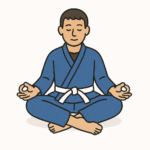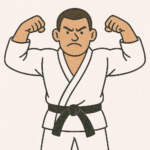Blackbelt or Bust Challenge
Test your BJJ knowledge. Every correct answer earns a stripe on the belt. Can you rank up to Black Belt? Be warned, one wrong answer and you’ve tapped.







Test your BJJ knowledge. Every correct answer earns a stripe on the belt. Can you rank up to Black Belt? Be warned, one wrong answer and you’ve tapped.

A map showing where over 100 of the great Brazilian Jiu-Jitsu athletes call home in Brazil.

This extended study explores who steps on the mat for the very first time — the data, demographics, injury risk, psychology, and trends shaping Brazilian Jiu-Jitsu’s newest competitors.

A long-form feature exploring how the 4-7-8 breathing technique, meditation, and the science of calmness can transform your performance before stepping on the mat.

An analysis on the top 3 submissions used in BJJ competitions over the last 5 years. It’s broken out by Gi and No-Gi, which provides from interesting differences between the two. What’s number one? Click to find out.

A defensible (and inevitably a bit unscientific) ranking that weighs dominance, depth of résumé, opposition quality, longevity, and influence on the gi meta—complete with reasons, impact, and short bios. Listed from #10 up to #1.

A clean, sourced “all-time” look at who actually finishes by submission most often. I define submission rate as “submission wins ÷ total recorded wins” on BJJ Heroes (their database is the most complete public ledger of gi result.)
At jjbentley.com we bring together the latest Brazilian Jiu-Jitsu breaking news, match results, and community updates with timeless lessons from stoic philosophy. Whether you’re looking to sharpen your guard passes, study classic submissions, or reflect on the mindset that carries over from the grappling mat to everyday life, this is your place. We explore the flow of jiu-jitsu through practical training tips, deep dives into iconic positions, and reflections on discipline, resilience, and self-mastery. From the newest trends in BJJ tournaments to Stoic lessons applied to rolling, you’ll find content designed to inspire both practitioners and fans of the art. Follow along for: Breaking jiu-jitsu news and event coverage & Philosophy on the mat — applying stoic wisdom to training and life. Stay connected, train your mind, and keep learning the flow.
Questions, feedback, or collaboration ideas? Send a quick note below.